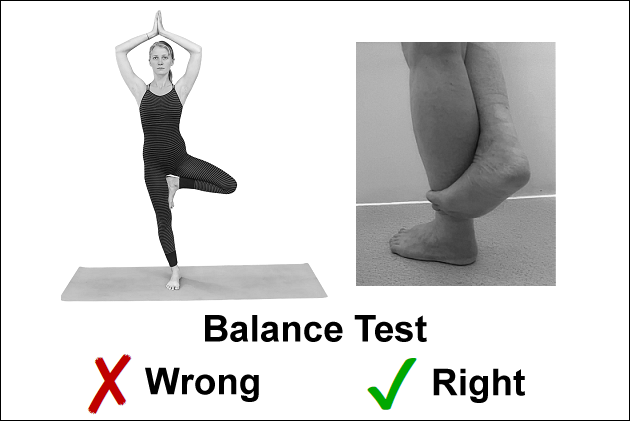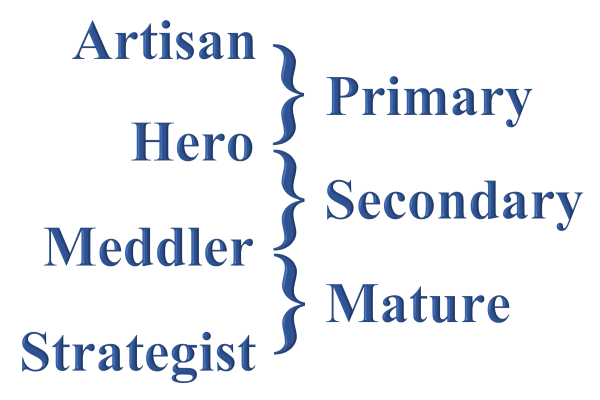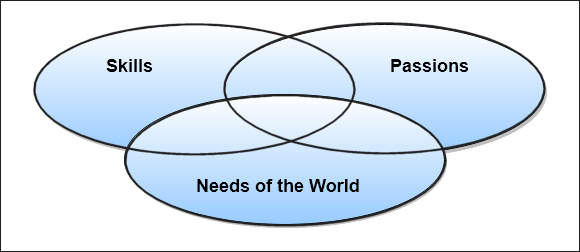What exactly are we trying to do here?
Build a universal problem solving technique.
The agenda for this 20 minute session as a small image:
@proactivepaul's blog – the Proactive accountant
What exactly are we trying to do here?
Build a universal problem solving technique.
The agenda for this 20 minute session as a small image:
How long can you stand on one leg?
Before it was paywalled the detailed British Medical Journal article was there in full for everybody to read. More importantly, it showed you the correct photograph. Many resources online will talk about balance and incorrectly illustrate it with the Vriksasana yoga pose.
These photos show you the wrong and the right way to do a balance test.

Lift one foot a little, and use the toes of that foot to “wrap” it around the calf of the other leg, just above the ankle. It doesn’t matter where your arms and hands are. I try to keep mine down by my sides, and I move them a little to help keep my balance.
The ability to stand on one leg depends not just on balance, but also on your age and your muscle strength. The Chartered Society of Physiotherapy gave me the following summary when I worked at the BMA years ago.
Balance with eyes open:
• Under 40 ➞ 45 seconds
• Aged 40-49 ➞ 42 seconds
• Aged 50-59 ➞ 41 seconds
• Aged 60-69 ➞ 32 seconds
• Aged 70-79 ➞ 22 seconds
Balance with eyes closed:
• Under 40 ➞ 15 seconds
• Aged 40-49 ➞ 13 seconds
• Aged 50-59 ➞ 8 seconds
• Aged 60-69 ➞ 4 seconds
• Aged 70-79 ➞ 3 seconds
How’s your performance? Mine is fair to middling!
Do you know where to find the secrets of success? The truth is that there are no “secrets”, they are all in the public domain, spread across hundreds of books, videos, seminars, and research papers.
So they are not secret, and anybody can find them if they know where to look. I started looking in 1997 when I started my first company. I was convinced that there was some clever trick that I was missing. Surely “running your own business shouldn’t be this hard” I thought!
I was lucky and I stumbled across one of the “secrets” in 2004, it had only taken me 7 years to find the start line! Then I found some more of the “secrets” .
Let me share that first “secret” with you.

In the 1970s and 1980s Colin Barrow was a captain of industry and later worked for ten years as Head of the Enterprise Group at the Cranfield School of Management. He developed the “Artisan theory of business growth” which says that there are only four types of business. He also said that without help, some businesses reach one level and never progress further.
Artisan
You are the business and the business is you. You are the artisan.
Hero
You’ve grown your artisan business to a headcount of something like 5 to 10 people. You know everybody and they all know you. It’s you that runs the team, you have the most experience and the most skill. You’re the only one who can pull everything together, and without you the business would fail. You are the hero.
Meddler
You’ve grown your hero business to a headcount of something like 20 to 30 people. You still know everybody personally and they all know you. The team has enough experience and enough skill to be able to run the whole operation without you. But it’s your baby! You built it from scratch and you can’t let it go. So you keep getting involved in everything, using the mindset of the artisan. Unintentionally, you are inhibiting further business growth. You are the meddler.
Strategist
By a stroke of good luck, or a wise decision to buy some professional advice, you’ve been able to progress beyond the level of meddler. You are now the captain of your ship and you spend your time on the bridge. You could go down to the boiler room and stoke the boiler if you wanted to, but you don’t. You have others who can do that more effectively than you can. Your focus is on commanding things, and you hire other commanders to help you at board level. Your sentimentally is under control, your business is no longer a baby, it’s mature, and now there is no limit to how big your business can grow. You are the strategist.
Making The Transition
The workforce size given above is a rough guide, and the boundaries between the four types of business may be flexible. What is certain though is that there are transitions which can take you from one level to the next, the primary, the secondary and the mature transitions. Do you need a program to help you with one of those transitions? More importantly if you want to shorten the meddler stage, or skip it altogether, then I can help.
Barrow wrote many books. My parents taught me how to venerate books and care for them, and my university tutors taught me how to conquer books and how to make them work for me. I’ve learnt more about Barrow’s methods from seminars than I ever learnt from the books. Nonetheless, I do read lots of books, by a lot of authors, and I prefer my books on paper!
I’m a prolific reader of non fiction, writing my own comments and doodling in the margins of paperback books, using highlighter pen and adding sticky flags to the best bits. Over 300 books so far, 300 seminars, 300 YouTube videos, and lots of journals, conferences, trade fairs and symposiums. You don’t have to do all of that, I’ve done that already, I’ve found the secrets (that took 25 years) and I’ve distilled the best bits into a 12 month program.
My current portfolio includes three successful businesses of my own, and I’ve been involved in dozens more, helping clients to achieve their goals.
I help small businesses make more profit in less time. Interested?
This is a simple truth, you are the best careers advisor you will ever meet, and that’s because you know more about yourself than anybody else ever will. Moreover, Plato and Steve Jobs probably know a lot more about careers advice than any of the careers advisors you’ll ever meet!
Careers advisory services have their own agenda, and a box ticking mentality. It’s their job to fulfil their remit, and that means satisfying their superiors. If you’re lucky, one of the by products of their machinations might involve placing you one step closer to a career that really suits you.
One day, back in the 1970s when I was aged about 15, I was sent to see the school’s careers advisor. A middle aged woman, whom I had never seen before (nor ever saw again) ran through a short, prescriptive routine, and it went something like this:
“Tell me about yourself, what do you like doing, what school subjects do you like, and what makes you tick?”
In those days, I was an active teenager, I liked to get out and about, cycling, swimming and flying gliders. Until you join a gliding club you don’t realise how physical it is, lots of moving gliders around on the ground! My other big hobby was making transistor radios, amplifiers and all sorts of weird things that could be put together on a circuit board, with a soldering iron. That was a step up from making Airfix model aeroplanes. And, my favourite subjects at school were Maths and Physics.
I explained all of this to the school’s careers advisor, and stressed “I believe I’m intelligent, I’m dexterous, and I like building things. I’m also sociable and I like to converse with a wide range of people.”
Her response (with almost no hesitation) was a disproportionately forceful “travelling, washing machine repair man”. I was stunned . . . and silently I thought to myself “you have not understood a single word I have said”. Most of all, I thought she was insulting my intelligence by insinuating that I should accept a role doing little more than routine manual labour.
Detecting my silent bafflement she added “you would use your hands to make things, it requires intelligence and skill, and you’d get to meet lots of people”.
It was a short encounter in the extreme, during which the overriding thought entrenched in my brain was “I will never, ever talk to another careers advisor again”. I enjoyed flying, and (fancifully) I had imagined that I might like to become a fighter pilot!
Over the next day or two, discussions with my school friends led us to conclude that the advisor possessed a short decision tree that had only 8 questions and 16 answers. That’s short enough to memorise easily, and to allow the advisor to confidently and consistently deliver answers like nurse, vet, chef, car mechanic and travelling washing machine repair man! What the advisor had singularly failed to point out is that there are thousands of possible career paths, that she could not possibly cover them all, and that any comments made should be construed as simple indicators rather than as absolute determinations.
One thing this encounter certainly did achieve was my desire to never work as a careers advisor! Which is paradoxical, because I was invited to speak at the Digital Shoreditch Festival in 2012, to an audience of secondary school pupils, on the subject of careers in IT. And, now I’m publishing a blogpost about careers advice!
Anyway, at one stage I was a secondary school teacher of ICT (a career change that didn’t last long) and somehow during my teacher training I came across this valuable missive which is variously attributed to Plato, Aristotle, and later luminaries. In 2012 that became the central theme of my Digital Shoreditch talk. In summary it went like this:
“Consider your skills, your passions, and the needs of the world. Where they intersect, therein lies your calling.”
I finished my 30 minute talk by leaving this slide on the screen.

I had stressed that you’d be lucky to satisfy all three parts of the Venn diagram straight away, but if you could start with just one, then two, and then maybe one day you’ll get to join all the dots and find that third link.
A few years after that (by this time I was 56 years old) that Eureka moment struck me, and the dots joined up! I found the precise combination of factors which put me dead centre in that Venn diagram. It happened when I was talking to parents at another student event, this time hosted by UCL.
After my main presentation I often have people vying to have a more personal discussion with me, and I will never forget this particular enthusiastic pair, the young Asian mum and her daughter. I was explaining Plato’s model and the Venn diagram in more detail. Explaining how you must use a pen and paper, prepare three columns, and actually write down your skills, your passions; and suddenly the missing element (for me), the “needs of the world” element, sprang out of nowhere. Eureka!
I parked it in my short term memory long enough to write it down later. If you meet me in real life, I may share the detail with you. I don’t know if my dialogue paused for 2 nano-seconds, 3 seconds, or 40 seconds! This was truly the Eureka sensation I had waited 56 years for. Trying to keep my composure, and focus on the young mum and her daughter, we continued with a really highly charged and animated discussion!
This leads me to the other valuable piece of careers advice which Steve Jobs gave me in 2005. Actually, he gave it to a lot of people, he was the guest speaker at a graduation ceremony at Stanford University.
In the UK we call it a graduation ceremony, in the USA it’s a commencement ceremony, meaning the starting point for your working life.
Watch it all. It is well worth 15 minutes of your life, and it may change your life for ever. There are three messages in that speech and whilst I mention only “join the dots” you will find equal value in all of them.
This is me, paraphrasing Steve’s message and effectively it says:
“The dots will join up. At this stage you may not know how, or know when they will join up, but they will join up. Just keep on keeping on!”
There are two secrets of success. Firstly, to be in the right place at the right time; and secondly, to recognise that!
How many times have you been in the right place at the right time, and simply never noticed? It’s probably happened more often that you can imagine. I was 56 years old when I was in the right place at the right time; and actually recognised that fact! If it happened before, I missed it, every time!
And finally, you must write things down!
This is me, paraphrasing multiple authors, paraphrasing Benjamin Franklin:
“The best way to get things done is almost always to make a plan . . . and more specifically, to write down your plan. Research has shown that visually mapping out your tasks by writing engages the mind more than typing, and that leaves us more connected with our material, more connected with the things we need to get done. The frontal lobe of the brain, which is responsible for writing, also controls planning and problem solving. Just the simple act of handwriting your goals brings you closer to implementing them.”
I will (again) let Plato finish the presentation for me:
“Consider your skills, your passions, and the needs of the world. Where they intersect, therein lies your calling.”
